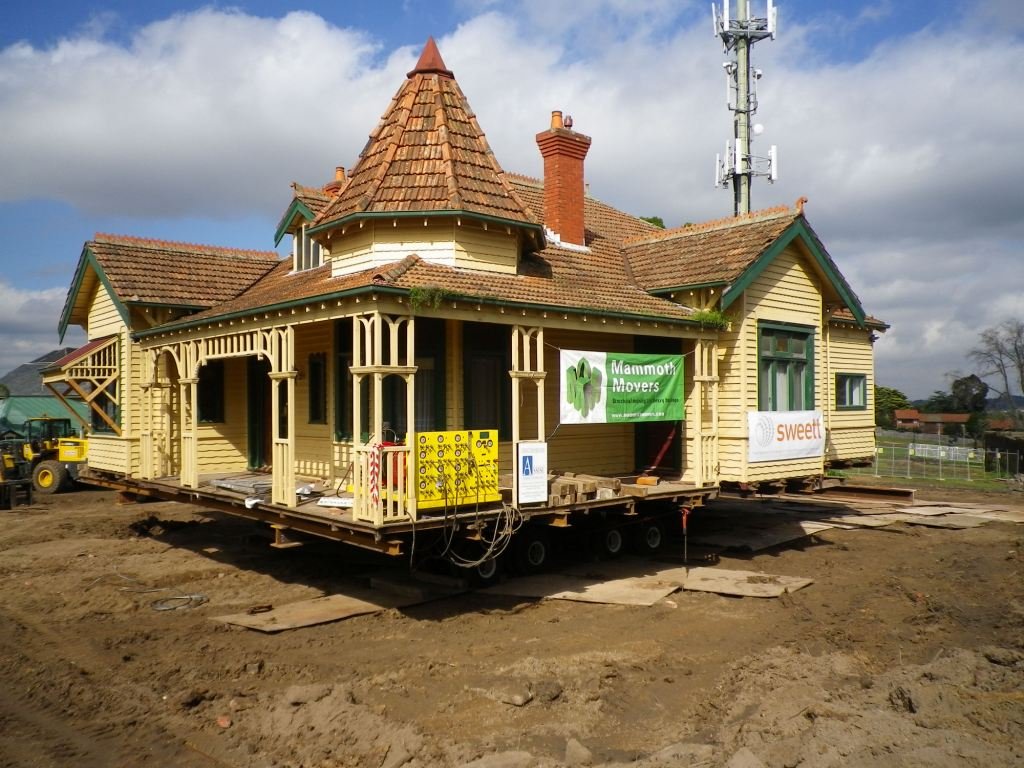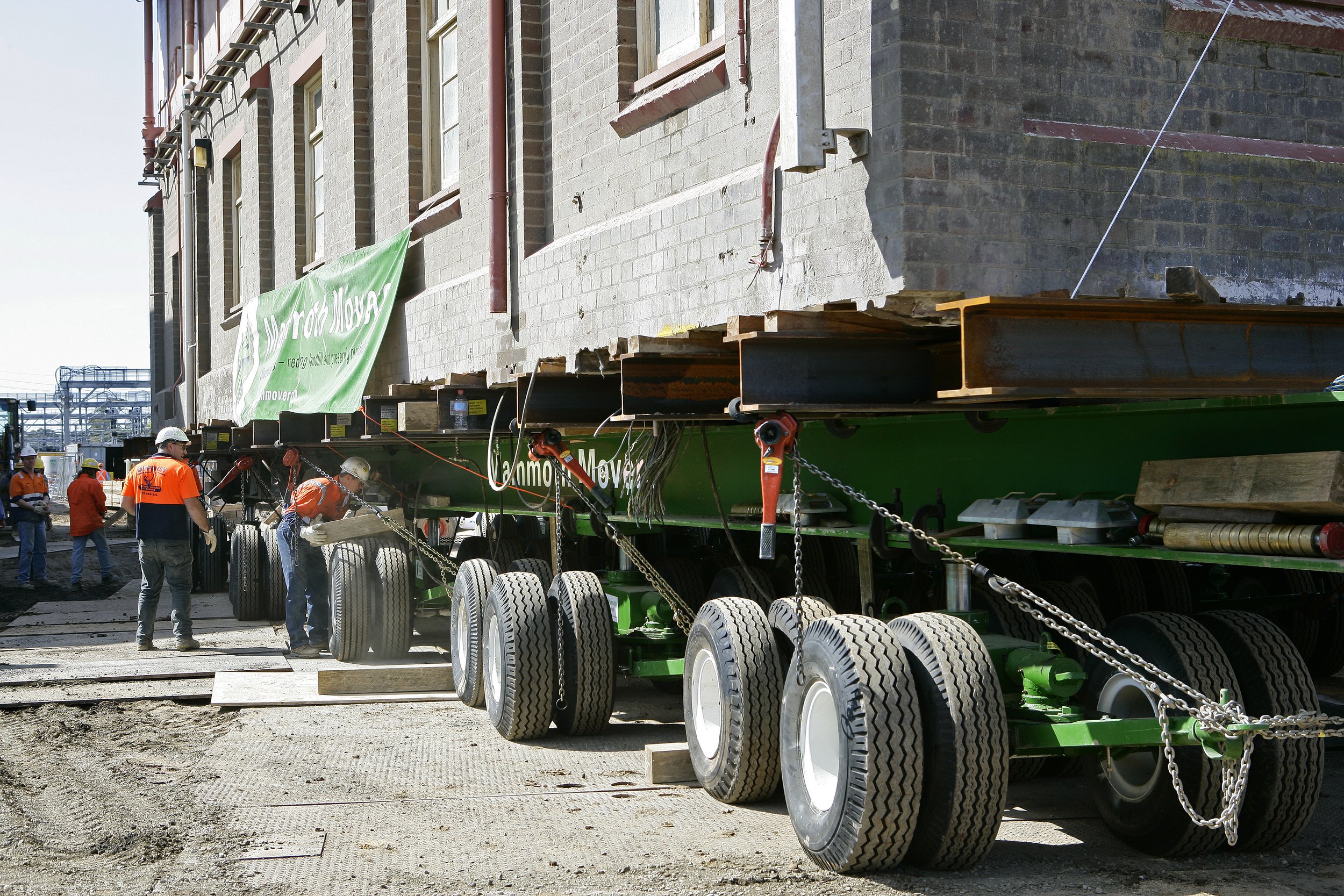
Providing Developer Advantage
Unlocking Value
Mammoth Movers Boosts Profit and Efficiency for South Australian Property Developers
When it comes to property development, time is money. Mammoth Movers understands this better than anyone. As premier house movers based in South Australia and the only Australian company specialising in moving brick and stone houses in one piece, we’ve perfected the art of seamless transitions. Our services have benefitted the eastern states since 2003, but we are South Australians and want to support South Australian developers…What can we do for you?
We’ve made a strong case for why relocating buildings in one piece is not just an alternative but a better solution in many cases. Maximize Profit, Minimize Hassle
Here is a breakdown of the benefits for those property developers considering this innovative approach. Let’s dive in.
1. Cost Efficiency
Saving on Costs: Let’s face it: property development is an expensive endeavour and a continual weighing up of risk versus reward. One piece relocation of existing assets tips the odds strongly in the developer’s favour. With the traditional knock down and new development approach you’ve got to pay for tearing down the old structure, hauling away debris, preparing the site, and then, of course, building something new from the ground up. Relocating a building in one piece can sidestep most of these expenses. By preserving the original structure, you save on materials and labour that would otherwise be spent on constructing a new building.
Reducing Waste: Think about all the materials that go to waste during demolition. Even with segregation, so much of it ends up in landfills. Relocating buildings is an environmentally friendly option that reduces the carbon footprint associated with new construction whilst saving money. It’s a great way to conserve resources by reusing existing structures instead of consuming new materials. The ultimate material bank!
2. Optimize Project Value
Reduce Sunk Costs: Minimize impact on margin by avoiding payment for assets which are not contributing to the final project. Maintain the residual value of the assets you have already paid for without detriment to the greater project by relocating them within the site or to an alternative site.
Maximize Site Utilization: Relocate buildings to increase square metres available for your development and to maximize your project potential within development plan constraints
3. Reduced On-Site Contractors
Enhanced Safety: Construction sites are hazardous places, especially when a large workforce is involved. Relocating a building typically requires fewer on-site workers, and avoids high risk activities such as craneage and working at heights.
Simplified Project Management: With fewer contractors and less on-site activity, managing the project becomes simpler and more efficient, leading to fewer coordination and interfacing issues and consequently a much smoother execution.
4. Time Savings
Quicker Project Timelines: In the world of property development, time is money. The process of demolishing a building and constructing a new one takes significant time, which needs to be supported by project financing. There’s a lot of waiting involved—waiting for permits, waiting for site preparation, waiting for subcontractors. Relocating a building in one piece will drastically reduce this timeline with an average residential house relocation taking around 4 weeks, start to finish. Compare that to new construction timeframe. In some projects this will severely benefit project cashflows as the relocated structure can be set up ready for sale much quicker, tipping dollars back into the cashflow bucket.
Simpler Approvals: Regulatory approvals can be a headache, but relocating a building often involves fewer hurdles compared to new construction. Relocated buildings do not need to meet current codes, generally they are treated as a black box with limited upgrade requirements. This can expedite the permitting process and get your project off the ground sooner.
5. Community & Aesthetic Value
Maintaining Community Heritage: Historical buildings are often a cherished part of a community’s identity. Relocating them preserves this heritage, maintaining a sense of continuity and local pride. Retaining original buildings as part of the development maintains council heritage overlays and contributory items requirements are no longer a road block.
Boosting Sale Price: By conserving these assets, property developers can tap into their unique charm and appeal, adding sole and value to their projects. Unique historical structures add a distinct charm to any development. They can increase the aesthetic appeal and market value of a project, attracting buyers or tenants who appreciate a blend of history and modernity.
6. Heritage Fabric Retention
Preserving Historical Value: Many buildings have significant historical or cultural value. Demolishing them can lead to a loss of heritage, sparking public backlash or even legal issues. By relocating these structures, you maintain their historical integrity and avoid potential conflicts.
Keeping It Authentic: For heritage buildings, retaining their original materials and craftsmanship is crucial. Disassembly often leads to the loss of these elements, but relocating the building in one piece ensures everything stays intact.
Meeting Regulations: Heritage buildings often come with strict preservation regulations. Relocating them can be a more straightforward and less intrusive way to comply with these rules compared to altering or rebuilding them.

The smart alternative to demolition
“The world’s oldest and largest recycling industry” is available to you, to move or elevate your building saving valuable time and money.
Relocation vs. Demolition and New Construction:
Demolition and New Construction:
High Costs: Demolition and new construction often come with hefty price tags due to new materials, labour, and extensive site work.
Time-Consuming: The combined process of demolishing and building new structures can take a lot of time, from months to years.
Environmental Impact: Demolition generates significant waste, and new construction has a large carbon footprint.
Community Backlash: Demolishing heritage buildings can lead to public opposition and even legal challenges.
Loss of Heritage: Demolition erases the historical and cultural significance of heritage buildings.
Relocation by Mammoth Movers:
Cost-Effective: You save on material and labour costs associated with new construction.
Time-Efficient: Accelerated project timelines with fewer regulatory delays.
Sustainable: Relocating buildings reduces waste and conserves resources, minimizing environmental impact.
Preserves Heritage: Maintaining historical and cultural integrity avoids community backlash.
Safe and Efficient: Fewer contractors on-site reduce risks and streamline project management.
Why Relocation is the Smart Decision
Here’s the real kicker: Mammoth Movers enables you to make smart financial decisions. By relocating structures, you maximize the utilization of development sites while conserving existing assets. Relocation of a typical house typically takes 4 to 6 weeks, a significant improvement on building. Retain the residual value of a building, adapt it to your project, and watch your profit margins grow. Whilst we have proven our skills in the eastern states, now its time for South Australian property developers to reap the rewards.
Mammoth puts no limits on what can and cannot be moved. If you can dream it, they can move it. Whether it’s a historic landmark or a tiny house, Mammoth has you covered. Real estate investments suddenly become more flexible, and your project numbers improve. By choosing Mammoth Movers, developers can achieve their project goals while preserving the cultural and historical fabric of their developments.
Ready to Move? Talk to Mammoth Movers and explore the possibilities!












